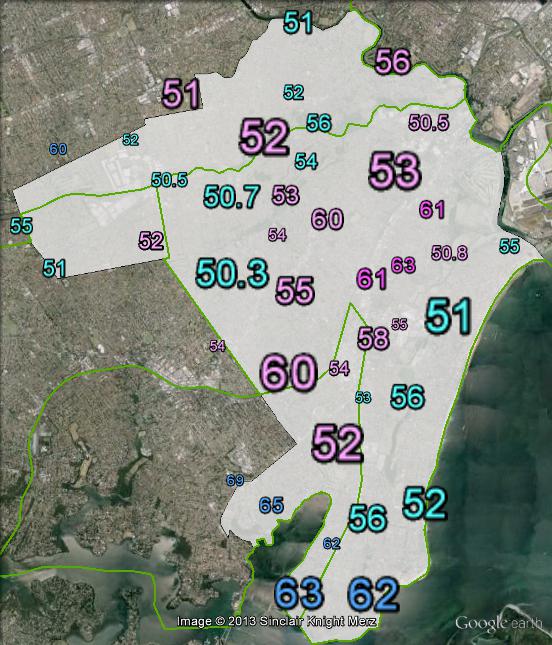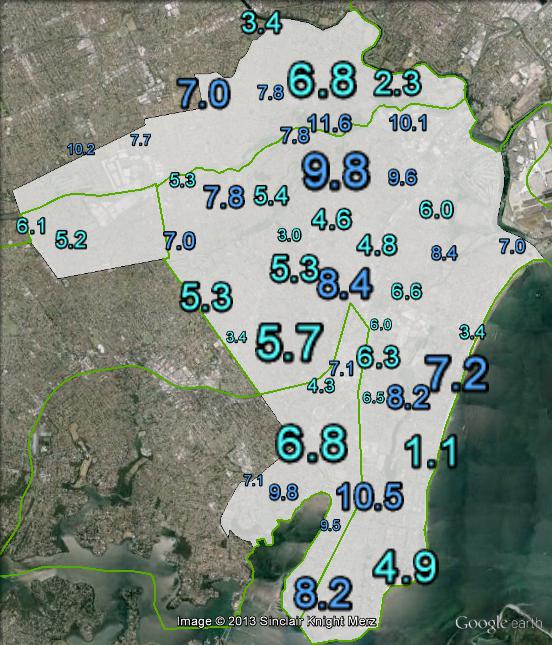As of the time of writing (on Monday night), Barton is the second-closest seat in the country, with Labor leading by 68 votes with no special votes counted.
As I did before the election, I have taken the booth results and split them into four regions: Central, North East, North West and South.
| Voter Group | GRN % | PUP % | ALP 2PP % | LIB swing | Total votes | % of ordinary votes |
| Central | 5.35 | 3.98 | 53.42 | 6.79 | 19,405 | 32.93 |
| North West | 4.48 | 3.59 | 51.11 | 5.77 | 15,993 | 27.14 |
| North East | 8.07 | 3.86 | 51.80 | 7.23 | 13,691 | 23.23 |
| South | 4.45 | 4.03 | 40.14 | 6.57 | 9,841 | 16.70 |
| Other votes | 5.28 | 3.98 | 48.92 | 7,988 |
The number of other votes is expected to at least double, and usually sits right on the seatwide average, so it’s hard to say which direction this will influence the result.
The ALP’s majority is largest in the centre, followed by the north. The Liberal Party’s large majority in the south offsets the smaller Labor margins in the other three, more populous areas.
The biggest swing to the Liberal Party was in the north-east, although it averages out to similar figures across the electorate, varying from 5.8% in the north west to 7.2% in the north east.





This looks like it could end up being the closest or second closest seat. Postals tend to slightly favour the Coalition I am told, however, I think this could go either way.
Ben, thanks very much for the opportunity to post on this site. My contributions here will now be minimal.
DB: thanks for your input during the campaign. I enjoyed reading it. (And thanks to Ben for the site.)
Comments are closed.